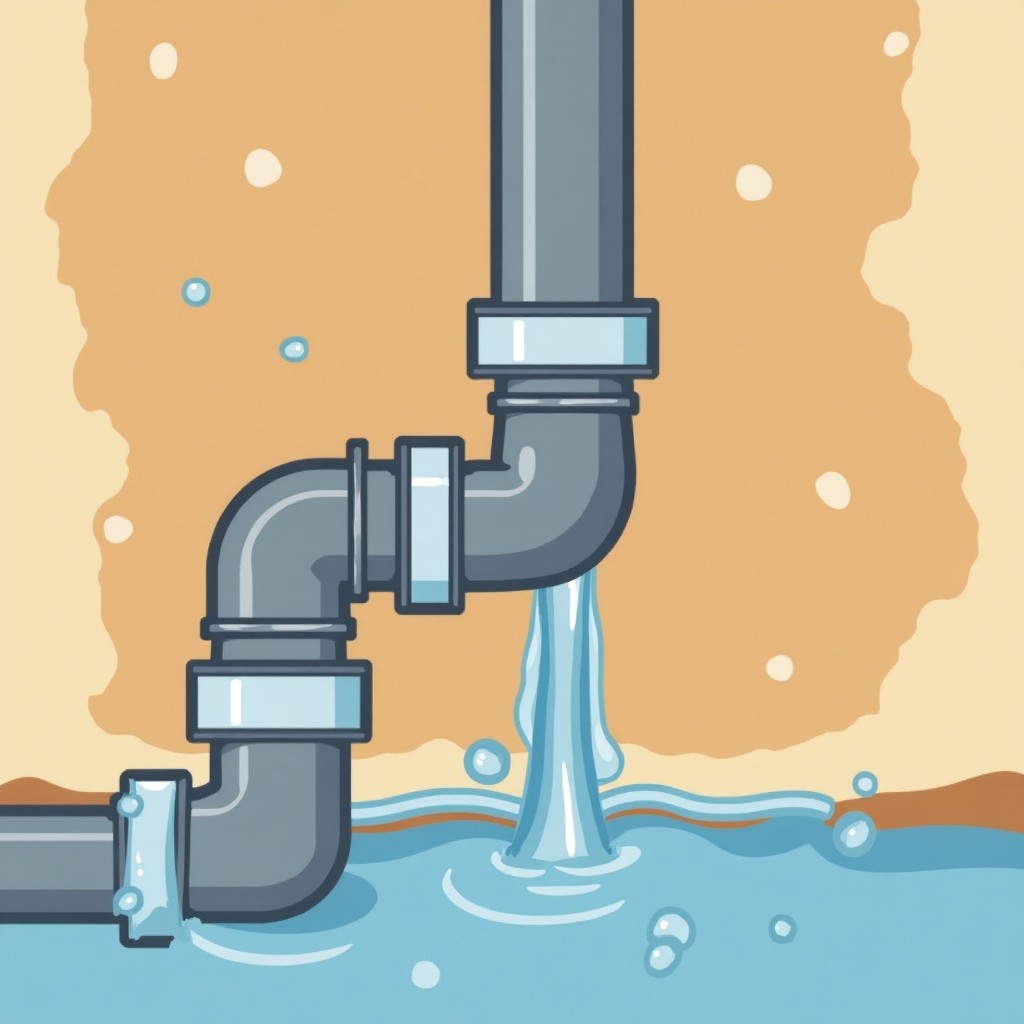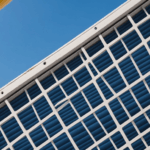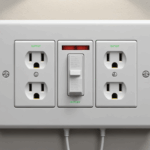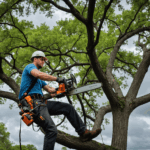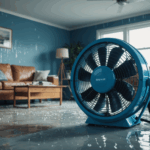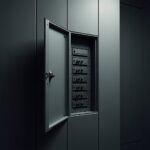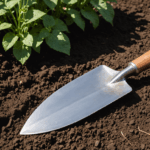It is easy to overlook water usage in a busy household, but unexplained spikes in your water bills can be a significant indicator of hidden plumbing leaks within your home. When you receive your monthly water bill and notice a sudden increase that doesn’t align with your typical consumption levels, it is essential to investigate further. Such increases are often the first sign of a problem—a problem that if left unaddressed, can escalate into costly repairs and severe water damage.
Hidden leaks can develop due to aging pipes, poor installation, or even natural settling of your home. These leaks may go unnoticed for extended periods as they often do not present obvious symptoms like visible puddles or dripping faucets. However, their presence is felt in your wallet. With a strategic approach to home maintenance, you can halt these leaks before they expand into larger issues. Here are some steps to assess potential leaks:
- Monitor water usage closely. Compare your water bill readings with the same period from previous years to detect any unusual increases.
- Conduct a dye test in your toilet tanks to identify silent leaks that waste water continuously.
- Inspect all visible pipes for moisture or accumulations that suggest an internal leak.
Let us consider a comparison to better understand the impact of undetected plumbing leaks on your water bill:
| Scenario | Monthly Water Bill |
| Normal Usage | $50 |
| With a Slow Leak | $75 |
| With a Significant Leak | $150+ |
From this simple table, you can see how even a slow leak can lead to a 50% increase in your bill, while a more substantial leak may easily triple your costs. The financial burden can be enormous over time, not to mention the indirect costs associated with water damage repairs and potential mold remediation. Being proactive through regular home maintenance and by staying alert to these signs can save time and money by allowing you to fix leaks before they spiral out of control.
Reduced water pressure
Experiencing reduced water pressure in your home can be an early sign of hidden plumbing leaks, indicating that something is amiss in your plumbing system. This can occur in one fixture or throughout the entire house, often leading to inconvenience in daily activities such as showering, doing laundry, or watering the garden. Understanding the underlying causes of reduced water pressure can help you identify leaks and take corrective action before more significant water damage occurs.
Here’s a step-by-step guide to diagnose and address issues related to reduced water pressure:
- Check for Localized Issues: Start by determining if the reduced water pressure is isolated to specific fixtures. If the problem is limited to a bathroom faucet or a particular shower, the issue may be a clogged aerator or showerhead. Unscrew the device, clean out any mineral deposits, and reattach. This simple step can often restore normal pressure if the issue is not leak-related.
- Inspect the Main Shutoff Valve: Ensure that the main water shutoff valve is fully open. If you or a service-person recently conducted plumbing work, the valve might not have been returned to its fully open position, leading to a drop in water pressure throughout the home.
- Evaluate Pressure Regulator Performance: Homes with pressure regulators need these devices working correctly to maintain consistent water pressure. A faulty regulator might lower the pressure drastically. If you suspect this, consider hiring a professional to test and possibly replace the regulator.
- Listen for Leaking Sounds: Sometimes, hidden plumbing leaks create a hissing or dripping noise, even if those leaks are not visible. Turn off all water in the house and listen for any unexplained sounds that could indicate a break or crack in the pipeline.
- Conduct a Meter Test: To check for hidden leaks, make sure all fixtures are off and read your water meter. Then wait a couple of hours without using any water and read the meter again. If it shows usage, you may have a hidden leak that requires immediate action.
- Inspect Pipes for Signs of Damage: Look for corroded or worn pipes, especially in areas prone to temperature fluctuations that can weaken pipe integrity. This kind of damage often leads to leaks, impacting water pressure and contributing to water waste.
- Consult a Plumbing Professional: If these steps do not resolve the issue or you suspect a more complex problem within your plumbing system, it’s advisable to call a professional plumber. A licensed plumber can provide a thorough inspection and utilize specialized equipment to pinpoint and repair leaks, ensuring your home’s water pressure returns to normal and preventing extensive water damage that can arise from untreated leaks.
Taking these steps not only helps you regain optimal water functionality for your daily routines but also prevents potential water damage. By staying diligent about testing and maintaining your home’s plumbing system, you contribute to sustainable home maintenance practices, which ultimately safeguards your property’s longevity and your peace of mind.
Stained ceilings and walls
Water stains on your ceilings and walls are more than just a cosmetic concern; they can be a major red flag indicating that there may be hidden plumbing leaks in your home. When water seeps through walls or drips overhead, it often leaves behind unsightly marks that range from faint discolorations to severe dark rings. These stains are not only troubling to look at but can also lead to more extensive and costly issues if not addressed promptly.
When you notice stained ceilings or walls, it’s crucial to act quickly to mitigate potential water damage. These stains typically occur when water accumulates behind the surface, which can weaken the structural integrity of your home. As water continues to seep, it can lead to the development of mold and mildew, posing health risks to your household. Identifying the source of the leak is the first step in preventing such damage. Start by inspecting common areas where leaks might originate, such as bathrooms, kitchens, or anywhere pipes run within the ceiling or walls.
Often, concealed leaks go undetected until significant water damage becomes apparent. Regular home maintenance and vigilant inspections are key to catching these issues early. Here are practical steps you can take when confronting stained areas:
1. Assess the Damage: Use a flashlight to closely examine the stain and its surrounding area. Look for signs of peeling paint, bubbling wallpaper, or any dampness that might suggest ongoing leakage.
2. Trace the Leak: Try to locate where the water might be entering. This can be challenging as water travels along beams and pipes far from its source before pooling and leaving stains. Start by inspecting upstairs bathrooms, kitchen sinks, and any other water supply lines located above the affected area.
3. Check for Roof Problems: If the stained area is directly beneath the roof, the issue could be related to loose shingles or inadequate sealing around roof penetrations, such as chimneys or vents.
4. Repair and Seal: If you identify the source of the leak, take immediate steps to repair it. This might involve sealing pipe joints, replacing roof shingles, or repairing bathroom caulking. If the task seems too big or the source is not easily identifiable, consult a professional plumber to perform a comprehensive inspection and repair, thus preventing further water damage.
5. Dry and Repaint: Once repairs are made, ensure the area is completely dry before repainting to prevent mold growth. Use mold-resistant paint for added protection against future leaks.
The presence of stained ceilings and walls not only affects the aesthetic appeal of your home but serves as a crucial warning sign for deeper issues within the plumbing system. Addressing these signs promptly can prevent more severe water damage, thus protecting the structural health and market value of your property. This underscores the importance of proactive home maintenance, ensuring that small signs of plumbing issues are managed before they escalate into significant repair burdens. By staying vigilant, and regularly inspecting your home, you can safeguard your investment and maintain a safe living environment.
Mold and mildew growth
The persistent presence of mold and mildew growth in your home is much more than an inconvenience; it is a telling sign that your property may be harboring hidden plumbing leaks. These fungi thrive in damp environments, and their continued growth is often indicative of excessive moisture levels in areas where water should not ordinarily collect. When plumbing leaks go unnoticed over time, they create a perfect breeding ground for mold and mildew, which can quickly escalate into a health hazard and a sign of underlying water damage.
Mold and mildew are not selective about where they grow and can often be found in less visible areas, such as behind walls, under floors, or inside cabinets. This makes it particularly challenging to detect the root of the problem. Moreover, their presence contributes to poor indoor air quality and can exacerbate allergies or respiratory issues for the household’s inhabitants. Therefore, addressing mold and mildew growth promptly is not only about maintaining a healthy living environment but also about protecting your home’s structural integrity.
To tackle mold and mildew effectively, start by identifying the moisture source:
1. Inspect Common Problem Areas: Begin by examining areas typically prone to moisture accumulation. This includes bathrooms, basements, and kitchens. Don’t forget to check spaces under sinks or around appliances like dishwashers and washing machines.
2. Look for Visual Clues: Search for patches of discoloration, fuzzy textures, or distinctive musty odors, which are telltale signs of mold. Pay attention to places that seem more humid than usual without an apparent cause.
3. Test for Elevated Moisture Levels: Use a moisture meter to detect high humidity levels within walls or floors. These tools can identify moisture beyond the visible mold, indicating a hidden plumbing leak that needs your attention.
4. Ensure Adequate Ventilation: Improving airflow by using exhaust fans in areas like the bathroom or kitchen can help reduce humidity levels, making your home less hospitable to mold and mildew.
5. Seek Professional Help: If mold covers a large area or if you’re unable to locate the source of a leak, consider consulting a professional for a more thorough inspection. They will have the tools and expertise to locate and repair hidden plumbing leaks, preventing further mold growth and substantial water damage.
6. Regular Preventative Maintenance: Incorporating home maintenance routines is key to preventing mold and mildew. Regularly check for leaky pipes, overflows, or drips that can lead to concealed moisture build-up.
Taking these steps not only aids in the removal of existing mold and mildew but also helps prevent future outbreaks, safeguarding your home from prolonged water damage and costly repairs. Mold and mildew growth is a warning sign that requires immediate intervention, underscoring the importance of routine inspections and prompt repairs to keep your home safe and preserve its value. By staying vigilant and proactive with home maintenance, you can effectively combat the adverse effects of hidden plumbing leaks, ensuring a healthier and more resilient living space for you and your family.
Sounds of running water
Hearing the sound of running water when all taps and fixtures are securely turned off can be an alarming indicator of hidden plumbing leaks within your home. This unusual auditory cue often signals that water is escaping from pipes and flowing into areas where it shouldn’t, such as within walls, under floors, or beneath the foundation. These leaks often remain unnoticed until the damage is significant, underlining the need for homeowners to be attentive to any unexpected sounds emanating from their plumbing systems.
To efficiently pinpoint the source of these mysterious water sounds, it is essential to adopt a strategic approach. Begin by walking through your home, pausing in areas where pipes are likely hidden, such as bathrooms, kitchens, and around the water heater. Listen closely for any hissing or dripping sounds that could suggest a leak. It is beneficial to perform this check during periods of silence, such as late at night, to better detect faint sounds that could easily go unnoticed amidst the day’s activities.
In addition to auditory clues, there are other prudent steps to verify the presence of a hidden leak:
1. Turn Off All Fixtures: Ensure that all water-using appliances and fixtures are fully turned off. This will help you determine whether the sound persists when water is not intentionally being used, further implying a leak.
2. Conduct a Meter Check: After turning off all water fixtures, take an initial reading on your water meter. Avoid using any water for a few hours and then check the meter again. An increase in usage indicates a leak, necessitating a more thorough investigation.
3. Inspect Behind Walls: Use a thermal camera to scan for cold or damp spots behind walls that might be obscured but are indicative of water seepage. These tools can help you visualize moisture levels that could pinpoint potential hidden leaks.
4. Professional Assistance: If self-inspection doesn’t yield clear results, contacting a professional plumber with specialized acoustic equipment is advisable. They can accurately detect concealed leaks and resolve them before they evolve into extensive water damage, thus preserving the integrity of your home’s structure.
These measures not only help in identifying and repairing leaks early but also in preventing water damage that can significantly compromise your home’s safety and efficiency. Regular home maintenance practices remain crucial in preserving your property’s longevity and ensuring a comfortable, leak-free environment for your family to thrive in.
In conclusion, being aware of and proactively addressing the signs of hidden plumbing leaks is paramount to safeguarding your home from potential water damage. Whether it’s an unexpected surge in water bills, reduced water pressure, or the emergence of stains and mildew, each sign can unravel intricate underlying issues within your plumbing system. By maintaining a vigilant stance through routine inspections and timely repairs, homeowners can mitigate damage, protect their investment, and ensure a safe, comfortable living environment. Awareness and action remain your best defenses against the hidden and costly impacts of plumbing leaks.
